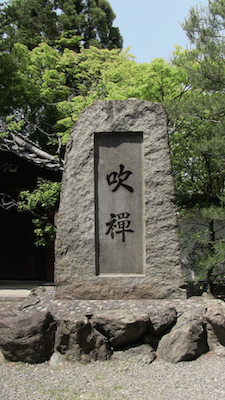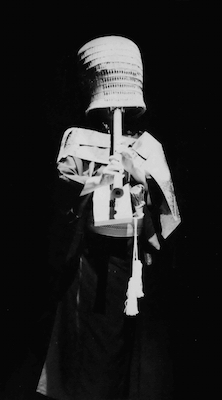Shakuhachi, Zen, & Suizen

Shakuhachi and Zen
Zen is difficult to define. It's not a religion in the western sense. There is no doctrine, and no god or gods. There are no rules or commandments. Zen is closer to a practice, a realization, or better yet, an un-realization. An un-realization of the illusion of separation, the illusion of self, of stories of time and space. Zen is only this. Beyond the intellect, beyond understanding, beyond convention, beyond the idea of Zen. Unconditional freedom.
There are different Zen sects that attempt to bring about this un-realization in different ways. Some focus primarily on zazen, sitting meditation, some on the koan, questions or statements aimed at dissolving the illusion of self and separation, and some that use both. There are differing ideas about the possibility of physical training vs. inquiry and insight and if either or both can bring about the dissolution of these illusions.
The Fuke sect, a sub-sect of Rinzai Zen with their headquarters at Myōan-ji (Temple of Light and Darkness), a sub-temple of Tōfuku-ji in Kyoto, has used the shakuhachi for centuries as a tool for Zen practice. In place of or in combination with zazen and the koan, the shakuhachi is used for suizen or blowing Zen.
Zazen
The practice of zazen is simple. Sit in a comfortable position with the spine straight, and bring attention to the breath. When attention drifts, bring it back to the breath. An alternative version is shikantaza, maintaining open awareness where attention is not contracted.
Through the practice of zazen it can be recognized that there is only this, no separation, no things, no self, nothing. No time, no space. Only this, indescribable and beyond comprehension.

Suizen
The practice of suizen or blowing zen is similar to the practice of zazen. Attention can be brought to the breath, the sound, the sound and the silence, or entirely un-contracted, open awareness. Inquiry can also be used. The practitioner can ask questions such as, when is the sound and silence arising? Where is the sound and silence arising? What is the sound and the silence? Who is blowing? What is blowing? Instead of answering these questions with thought, the aim is to look for the answers in experience, in the practice itself.
Through this practice it can be noticed that the sound and the silence are always "now". There is no time. The sound arises nowhere. There is no separation. The sound arises for no one, and no one is blowing. There is simply this, timeless, everywhere and nowhere.